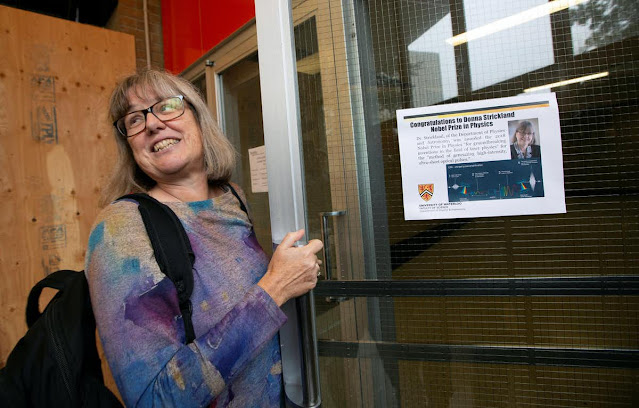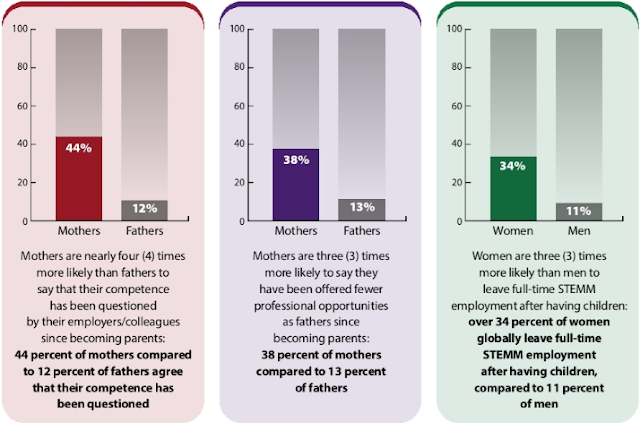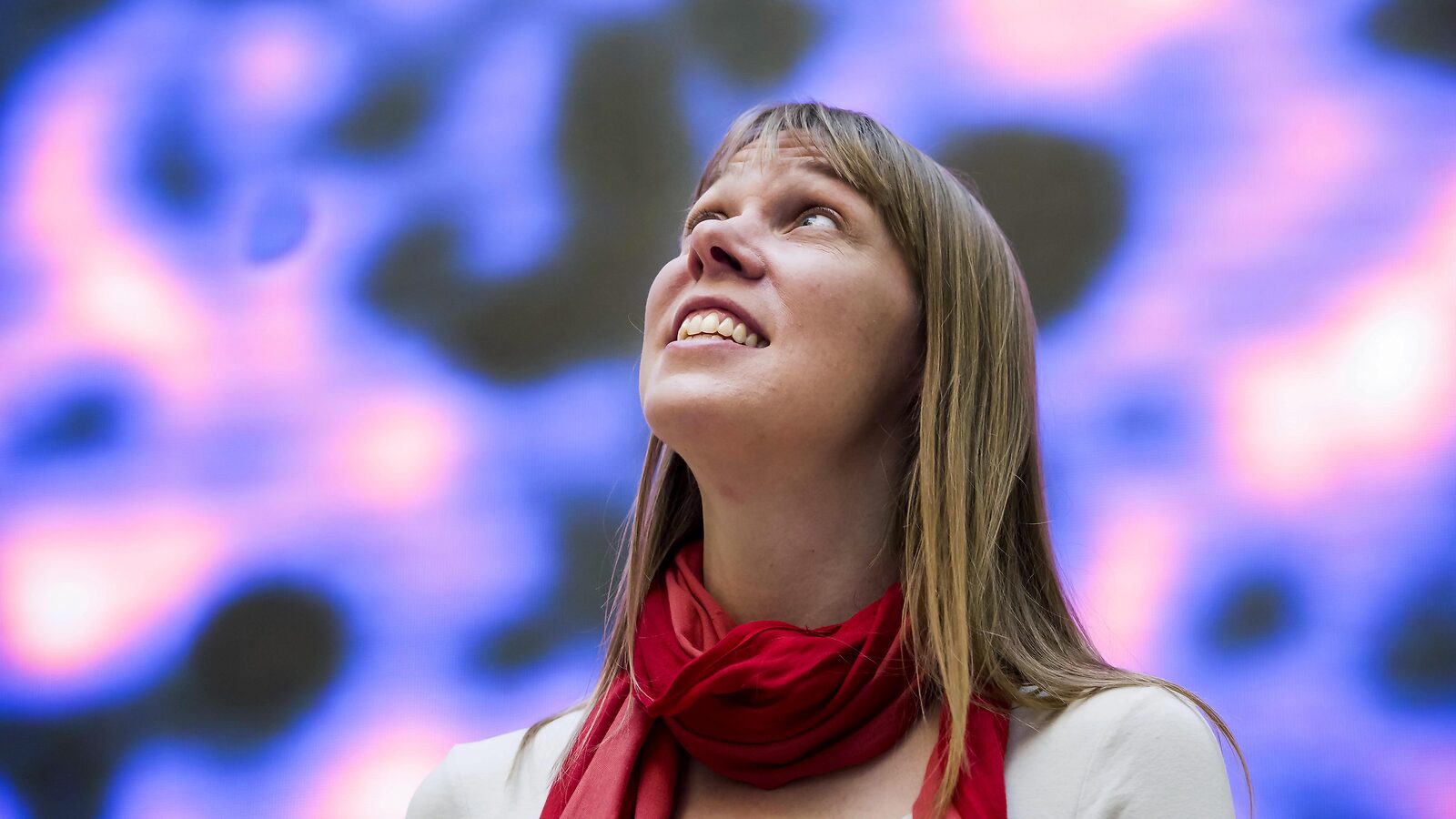The AAS Committee on the Status of Women in Astronomy maintains this blog to disseminate information relevant to astronomers who identify as women and share the perspectives of astronomers from varied backgrounds. If you have an idea for a blog post or topic, please submit a short pitch (less than 300 words). The views expressed on this site are not necessarily the views of the CSWA, the AAS, its Board of Trustees, or its membership.
Tuesday, November 30, 2021
Crosspost: ESAC SCI-S Science Seminar featuring Dr. Jocelyn Bell!
Tuesday, November 23, 2021
Crosspost: Madagascar STEM Non-profit Completes a Successful OAD Proj
A team of female scientists from Ikala STEM (Women in STEM – Madagascar) implemented LAMPS (Leveraging Local Astronomy to Promote STEM), a project to directly address the inequality between urban and rural Madagascar in accessing quality STEM education and to showcase the relevance of science in everyday life. Originally planned to be held in the AVN-host city of Arivonimamo, this Office of Astronomy for Development-funded project was adapted to a two-stage STEM education hybrid event, a one-week online activity (e-LAMPS) and school visits by LAMPS volunteers, due to the COVID-19 pandemic.
e-LAMPS online program
e-LAMPS was held in June 2021 under the theme “Science in our daily life” or “STEM, incontournable dans notre quotidien” in French. Primarily targeted at middle and high school learners as well as tertiary students, e-LAMPS was designed to substitute the planned in-person STEM Fair (cancelled due to the pandemic). The event consisted of online quizzes, games, talks etc, targeting Malagasy middle and high school learners all over the country. The Ikala STEM Facebook page and website as well TV (TVM, Dream’in, TV Plus Madagascar) and radio (Fivoarana in Arivonimamo, RNM reaching around the country) stations, printed newspapers (e.g. L’Express de Madagascar) and posters were used to ensure maximum reach for e-LAMPS. Seven STEM-focused NGOs partnered with Ikala STEM during this virtual component of the project. More than 100 high school learners participated in the e-Quiz Contest and at least 15,000 people were reached virtually throughout the event.
Friday, November 19, 2021
AASWomen Newsletter for November 19, 2021
Issue of November 19, 2021
eds: Heather Flewelling, Nicolle Zellner, Maria Patterson, Alessandra Aloisi, and Jeremy Bailin
[We hope you all are taking care of yourselves and each other. Be well! --eds.]
This week's issues:
1. Crosspost: The Impacts of Parenthood Are Not Equal
3. Catherine Heymans shines as Astronomer Royal for Scotland
4. Once Shunned in Antarctica, Female Scientists Are Now Doing Crucial Polar Research
5. These Women Found Creative Ways to Overcome the Barriers in Front of Them
6. Lost Women of Science, Episode 3: The Case of the Missing Portrait
7. Girls need a lot more than STEM education to become the next generation of women CEOs
9. How to Submit to the AASWomen Newsletter
10. How to Subscribe or Unsubscribe to the AASWomen Newsletter
11. Access to Past Issues of the AASWomen Newsletter
An online version of this newsletter will be available at
http://womeninastronomy.blogspot.com at 3:00 PM ET every Friday.
Thursday, November 18, 2021
Crosspost: None of the 2021 science Nobel laureates are women – here’s why men still dominate STEM award winning
Written By Mary K. Feeney for The Conversation
 |
| Dr. Donna Strickland, winner of the 2018 Nobel Prize in physics, glances over her shoulder before entering her laboratory at the University of Waterloo. |
That’s a return to business as usual after a couple of good years for female laureates. In 2020, Emmanuelle Charpentier and Jennifer Doudna won the chemistry prize for their work on the CRISPR gene editing system, and Andrea Ghez shared in the physics prize for her discovery of a supermassive black hole.
2019 was another year of all male laureates, after biochemical engineer Frances Arnold won in 2018 for chemistry and Donna Strickland received the 2018 Nobel Prize in physics.
Strickland and Ghez were only the third and fourth female physicists to get a Nobel, following Marie Curie in 1903 and Maria Goeppert-Mayer 60 years later. When asked how that felt, Strickland noted that at first it was surprising to realize so few women had won the award: “But, I mean, I do live in a world of mostly men, so seeing mostly men doesn’t really ever surprise me either.”
The rarity of female Nobel laureates raises questions about women’s exclusion from education and careers in science and the undervaluing of women’s contributions on science teams. Women researchers have come a long way over the past century, but there’s overwhelming evidence that women remain underrepresented in the STEM fields of science, technology, engineering and math.
Studies have shown that those women who persist in these careers face explicit and implicit barriers to advancement. Bias is most intense in fields that are dominated by men, where women lack a critical mass of representation and are often viewed as tokens or outsiders. This bias is even more intense for transgender women and non-binary individuals.
As things are getting better in terms of equal representation, what still holds women back in the lab, in leadership and as award winners?
Tuesday, November 16, 2021
Crosspost: The Impacts of Parenthood Are Not Equal
 |
| According to research from Mothers in Science's 2020 global survey on the impact of parenthood in STEM careers, mothers are more likely to be perceived as less competent and offered fewer professional development opportunities compared to fathers. |
Mothers are perceived as less dedicated employees and less competent due to implicit bias and structural problems that have nothing to do with motherhood. For example, as the COVID-19 pandemic has demonstrated, women carry more of the burden for childcare and eldercare than men. Mothers require support from their partner at home, flexible workplace policies, and affordable and accessible childcare options. However, not everyone has access to these resources.
To be healthy and successful at work, women need to be able to 1) seek medical attention and informed advice and 2) to be able to make decisions about their reproductive health, including the choice about whether to have, and when to have, children. In science-oriented careers, particularly those in higher education where tenure may depend on stepped and timed advancement, the impact of an unplanned pregnancy can be especially significant.
Since men do not experience these challenges, any laws that interfere with women’s reproductive health, including the timing of pregnancy, unfairly target women — especially underprivileged women who do not have access to birth control, proper healthcare, transportation, and/or finances to obtain the care they need. To support women’s careers, we need to support their right to choose.
*The Mothers in Science survey “Impact of parenthood on career progression in STEMM” was conducted between September 15th and December 31st, 2020. All responses correspond to the participants’ situation prior to COVID-19, and therefore, do not reflect the additional pressures brought on by the pandemic. The answers are based on self-report. A total of 8,930 participants, including mothers, fathers and non-parents, completed the survey. The study brings together survey participants from 128 countries, although the following countries are over-represented: the US, France, UK, Germany and Australia. As expected, women are also over-represented in the survey, which can be common in surveys related to women and caregiving issues. The survey was designed and led by Mothers in Science and conducted in partnership with INWES, Washington University St Louis, Parent in Science, Femmes & Sciences and 500 Women Scientists. Mothers in Science is analyzing the data in collaboration with a team of statisticians from the Universities of Grenoble, France and University of Toulouse, France.
Friday, November 12, 2021
AASWomen Newsletter for November 12, 2021
Issue of November 12, 2021
eds: Heather Flewelling, Nicolle Zellner, Maria Patterson, Jeremy Bailin, and Alessandra Aloisi
[We hope you all are taking care of yourselves and each other. --eds.]
This week's issues:
1. Crosspost: Joanne Cohn and the email list that led to arXiv
2. Paper on predicting astronomy careers from publication metrics withdrawn
3. Astronomers Say More Diversity Needed in Field as Men Greatly Outnumber Women: Survey
4. Confronting Inappropriate Behavior and Harassment in Physics
5. Free Workshop for Early-Career Astronomers Who Want to Do Better Outreach
6. Senators launch bipartisan Women in STEM Caucus
7. Scientists count the career costs of COVID
8. IAU Women in Astronomy working group survey
9. Women in Science. Lessons from the Baby Boom
11. How to Submit to the AASWOMEN newsletter
12. How to Subscribe or Unsubscribe to the AASWOMEN newsletter
An online version of this newsletter will be available at http://womeninastronomy.blogspot.com/ at 3:00 PM ET every Friday.
Thursday, November 11, 2021
Crosspost: Joanne Cohn and the email list that led to arXiv
This past summer, arXiv marked its 30th birthday. According to its website, it receives some 16,000 manuscripts each month, and more than 1.97 million papers have been submitted to date. About 30 million manuscripts are downloaded monthly.
Friday, November 5, 2021
AASWomen Newsletter for November 5, 2021
Issue of Nov 05, 2021
eds: Heather Flewelling, Nicolle Zellner, Maria Patterson, Jeremy Bailin, and Alessandra Aloisi
[We hope you all are taking care of yourselves and each other. --eds.]
This week's issues:
1. Astronomers for Planet Earth: Michelle Willebrands
2. US astronomy's 10-year plan is super-ambitious
3. APS Webinar: Toward Gender Equity
4. Study casts doubt on theory that women aren't as competitive as men
6. This Is How Everyday Sexism Could Stop You From Getting That Promotion
7. I Was Told I Have Career Advantages ‘as a Black Woman.’ Here’s How I Replied.
8. How to Submit to the AASWOMEN newsletter
9. How to Subscribe or Unsubscribe to the AASWOMEN newsletter
An online version of this newsletter will be available at http://womeninastronomy.blogspot.com/ at 3:00 PM ET every Friday.
Tuesday, November 2, 2021
Astronomers for Planet Earth: Michelle Willebrands
If you're interested in learning more about A4E's work combating global climate change and want to get involved, join them here at: https://astronomersforplanet.earth/join-us-1. And be sure to check out A4E's white paper on what astronomers (like you!) can do to address the climate crisis: Astronomers for Planet Earth: Engaging with the Public to Forge a Sustainable Future.
 |
| Michelle Willebrands is a project manager with E-ROAD with a focus on forging partnerships between European and African scientists. |
I am the coordinator of the International Astronomical Union’s European Regional Office of Astronomy for Development (IAU E-ROAD) based at Leiden, the Netherlands. I did a master’s degree in astronomy and decided to specialize in science communication. During this specialization, I got the chance to work at the headquarters of this office in Cape Town and learn about the field of astronomy for development. After my studies, applying for this position was a great opportunity to continue working in this niche within astronomy and I was lucky enough to get the position. Now, I look at how astronomy can contribute to the UN Sustainable Development Goals and set up projects and collaborations to do so.
What is your role in Astronomers for Planet Earth (A4E)?
I have been involved fairly early on when the European chapter was established. I try to help out with the operations and across the various projects, including for example the recent Open Letter initiative. In general, I also try to connect A4E with the global network of the IAU Office of Astronomy for Development (OAD) that I am part of. Climate change and sustainability are crucial topics when addressing the sustainable development goals (SDGs), so this connection between A4E and the OAD is a very natural one to me.
What goals do you have for your role in A4E?
At A4E, I hope that I can keep contributing with the expertise and network that I have. One thing that matters to me a lot is the social justice aspect of the climate crisis. Currently, A4E does not represent astronomers from all over the world, although we are trying to engage with astronomers everywhere. I hope that we can achieve creating a diverse network with voices from all backgrounds and perspectives in the near future.
Describe the first time you made a personal connection between your passion for astronomy and the urgency of fighting climate change.
Climate change was a topic that I think I always connected to astronomy in outreach, but the time that the urgency of the climate crisis really hit me may actually coincide with that of some of the other members from Europe. One of the first conferences I attended in my current position was the 2019 annual meeting of the European Astronomical Society in Lyon, France, during which there was a heatwave. To try and keep the attendants comfortable there were plastic bottles with water everywhere you looked but it was still unpleasant to be with so many people in an old building. The combination of the extreme heat, the plastic litter and the fact that so many people had travelled (by train or airplane) to take part in the conference felt a bit ridiculous and almost immoral. It was during this conference that the precursor of what is now the European A4E chapter was first raised and I joined briefly afterwards.
How does your career in astronomy intersect with the fight against climate change?
In my position of E-ROAD coordinator, I am lucky enough that I can look at astronomy in the broadest sense possible: as a research field, in education and public engagement, the benefits it brings to society, but also the challenges we face in sustainable development and the role that scientists can play to address them. This means that I consider the work I do with A4E and combating climate change as a part of my astronomy career. Specifically, this translates to an educational program that we are setting up for young children called Pale Blue Dot. In this project, we use the awe-inspiring images of Earth as seen from space to teach children across the globe about the interconnectedness of our home planet and the need to work together in solidarity to protect it. Astronomy can offer a very powerful perspective on the uniqueness of the Earth and its climate which can be used in education and science communication to engage people everywhere in the fight against climate change.
 |
| Willebrands explores a local waterway, trimming the sails and steering the rudder in a wooden sailboat. |
How can the astronomical community engage with the climate crisis movement?
As scientists, astronomers understand the science behind climate change and the urgency to act now. The astronomical community, like any scientific community, can be a role model in handling the climate crisis by changing their own behaviors on one hand and by engaging with the public to talk about climate change on the other. Astronomy is a field of research that has a relatively high footprint, so the astronomical community needs to reflect on the way that research is being done and adapt its practices to be more environmentally sustainable. I believe that this is our responsibility as scientists, but it is also simply necessary to make the field future-proof. Secondly, astronomers can (and should!) use the cosmic perspective on Earth to communicate and educate about the climate crisis. The sense of wonder about our vast Universe and the place of our home within it can unite people and instill a strong incentive to act against the climate crisis.
If you weren’t in the field of astronomy, what would you be doing?
My interests are very wide, so life could have taken me in a lot of different directions! I would love to work with my hands more, making furniture or blowing glass for example, or to take the circus sport I do as a hobby to a professional level. But I suppose I will always have a weak spot for sciences and STEAM fields, and working as a biologist or geologist also sounds terribly interesting. I am happy doing what I do but the world has a lot of amazing things to offer.
Do you have any advice for future astronomers who might also be interested in addressing the climate crisis?
My advice would be to realize that we can all do something and play our part. Whether you simply talk about it with your friends, incorporate climate change into classes for your students, or raise the topic with the governance of your institute, it is all worthwhile. And most importantly, keep focusing on the positive changes we can make, it can be overwhelming to try and create change. And anyone who is looking for advice or support is of course welcome to join A4E and strengthen the movement!



